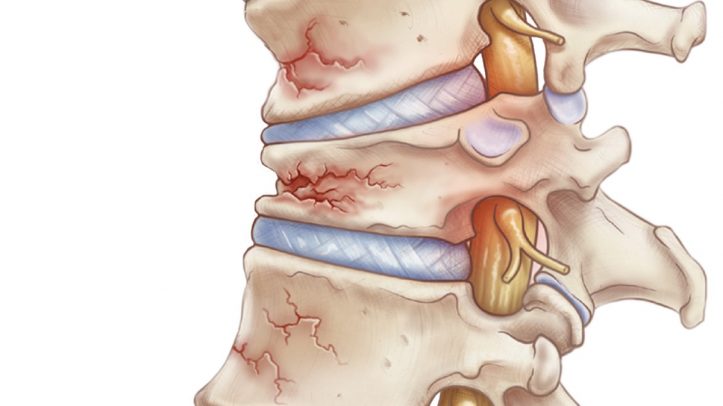What is Osteoporosis? Osteoporosis is a disease of the bones, and most people are not aware of it. Osteoporosis is the loss of bone density that primarily affects middle aged and older people. Osteoporosis makes bones fragile and less dense so that even minor stresses like bending over or even coughing can cause a fracture in an elderly person. Most people die from osteoporosis before they reach sixty years old.
There are many causes for osteoporosis. Osteoporosis is caused when the body produces less than enough estrogen. Women produce less estrogen during their young adult years compared to men. The hormone estrogen is essential for strengthening the bones, but not enough in women to actually make them osteoporotic. This is known as primary type osteoporosis.

Other causes osteoporosis includes decreased blood flow and nutrition, lack of exercise and injury. Osteoporosis can also be caused by hormonal changes that occur during menstrual cycles or through pregnancy. These hormonal changes weaken the bones. These hormonal changes that cause osteoporosis can either be reduced with hormone replacement therapy or estrogen treatment while pregnant, or they can remain at full strength throughout a woman’s pregnancy.
Primary osteoporosis can only be diagnosed by one test called a spinal examination. If the doctor finds fractures in one vertebrae in your spine, he or she will refer you to a rheumatologist, who is an expert in treating rheumatoid arthritis. The rheumatologist will analyze your medical records, your x-rays and any previous symptoms you may have had. Then your doctor will create a bone remodeling plan based on your needs and your diagnosis.
The osteoporosis fractures are divided into two categories: one is a complete break and the other is a crack that doesn’t heal. Complete fractures happen when the bones have severely damaged. They often cause the bone density test to show low bone density. You might hear a clicking sound when you bite down, when you stand or when you move your arms.
Women usually experience partial and full fractures. The symptoms of osteoporosis in women are much the same as in men. They include frequent back pain, difficulty in standing up and walking and the tendency to bruise easily. The symptoms of osteoporosis in men are less severe. Most men do not suffer from bone loss and they don’t have a cracked or broken bone.
You need to take action quickly if you are a woman and osteoporosis seems to be a problem. Women usually need to have their ovaries removed because they are at an increased risk for osteoporosis. Having your uterus removed can be very dangerous because it can prevent your body from producing adequate estrogen. Since hormones play an important role in maintaining bone mass, having your uterus removed can drastically reduce your bone density. If you have osteoporosis you need to get a bone density test to determine the loss of bone mass. It is better to be early than late.
There are some medical conditions that can increase bone loss and some of them you don’t even know about. Some conditions affect the blood vessels and can contribute to osteoporosis. Many health professionals don’t even know about these conditions. Anyone with any of these medical conditions should talk to their doctor about the possibility of increasing the risk for osteoporosis.
The women who have osteoporosis are often younger than the average woman. In fact, there are one hundred fifty million americans over the age of twenty that suffer from osteoporosis. Some of them may have found relief through medical treatments while others didn’t. It is important to keep in mind that osteoporosis does not just affect the older individuals but it can affect anyone from twenty years old to fifty years old.
Another condition that can cause osteoporosis may be rheumatoid arthritis. When the immune system attacks the bones in the body, it can weaken them and cause osteoporosis to occur. Some people are more at risk for this condition than others are and it can affect both men and women. Women usually deal with hip fractures more than men do but even though this may not sound like a reason for concern, a woman should schedule an appointment with her doctor to discuss her symptoms.
In conclusion, if you have been told you are at risk for osteoporosis or have experienced a fracture, you need to discuss your concerns with your doctor and consider having a bone density test done. This will determine if you are at risk and what treatments you need to improve your chances of avoiding the disease. Remember to discuss any family medical history you may have with your healthcare provider as well. Your healthcare provider can help you to determine the best course of treatment for your needs.